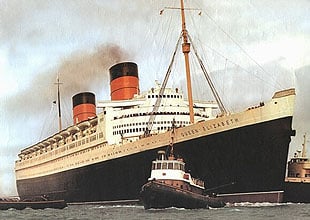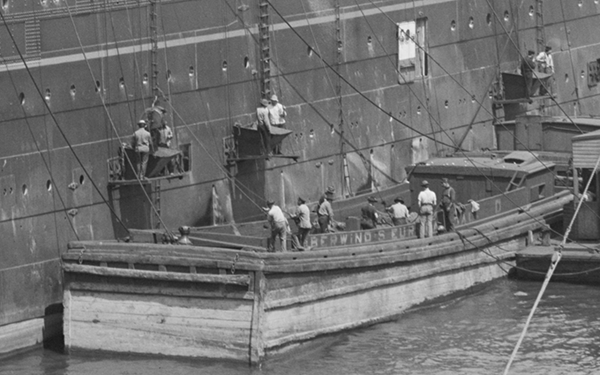These days cruise ships come in all sizes and colors, but not long ago this wasn't the case. To this day, when most of us see ships with dark colored hulls we think of them as more traditional looking, no matter what the age of the vessel. Why is this? Well, it has to do with how these great ships are powered, and the letters sometimes preceding ship names. Make sense?

Want to see a video explanation we made on this topic? Video: Why Cruise Ship Hulls Are Traditionally Black or Navy
Ever see a ship with MS (sometimes m/s or m/v) in front of her name, such as the MS Nieuw Amsterdam? This is short for Motor Ship (or Motor Vessel), and there was a time, not so long ago, that this differentiated those vessels from others which started with SS. It's often assumed these days that SS (sometimes s/s), stood for steamship, and that's not wrong, though it originally stood for Screw Steamer. Screw steamers were steamships that used steam-powered engines driving a propeller (known as a screw in nautical parlance). Paddle steamers (PS, or p/s) also used steam for power, but that power was used to drive paddle-wheels, which were generally secured to each side of a ship, or to the aft.

How does this relate to the color of the hull? Well, the boilers on steamships were originally coal-fired. Coal was burned to turn water into steam and the steam was used to power the ship. Taking on coal while in port meant shoveling tons of black, dusty coal into doors located just above the water line on the side of the ship. These doors lead to chutes that lead to the coal bunker, where trimmers (the people handling coal below deck) hauled the coal to the appropriate furnaces.

This process left the trimmers as well as the sides of the ship covered in coal dust. No beautiful ocean-liner could be seen like this, so light color exteriors, at least near the coal chutes, were out of the question. Looking at older ships from Cunard, P&O, White Star, and even the SS United States, these ships all had dark hulls. Some ships may have had only the bottom third of the hull dark, with lighter colors above, where coal dust wouldn't show. With a handful of exceptions, passenger ships stopped using coal a long time ago. Even the Queen Mary was built to run on bunker oil. Though the demise of coal wasn't just about new ships, because the engine-rooms of many ships had their boilers modified to be fired by bunker oil (petroleum-based fuel). Despite coal trimmers being made obsolete by modern technologies, the hulls of many of these ships, such as those on Holland America and Cunard, remain dark to this day, a look that I personally enjoy.

July 2020 Update: As some fine folks on Reddit were discussing, the paint used below the water line was traditionally (and often still is) red. This is because cuprous oxide is used in the paint as an anti-fouling agent to help keep barnacles off. Barnacles add to drag, so that's pretty important. There are now different colors of paint that contain anti-fouling agents, but red remains popular.
Take a look below at ships new and old with dark hulls, as some modern ships with much lighter, event colorful hulls. We miss some things about cruises of the past, but there are some great improvements, too. Have a question about maritime history? Wondering about what other function of ships dictated form? Let us know in the comments below, or reach out on Facebook or Twitter!

